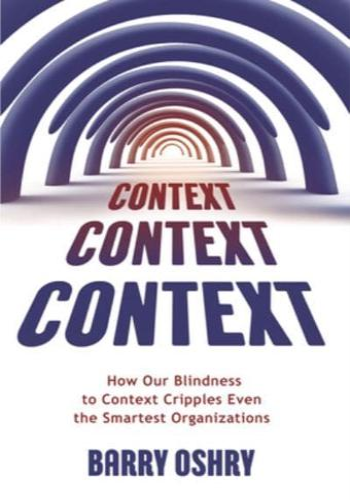It's well known that human beings are allergic to change. This is nowhere more true than of human beings in organizations. Organization Development initiatives, Leadership Development programs, and Business Transformation plans all founder too often on our resistance and reluctance, on the tendency of people and things to slip back to how they were before. For a long time, Systems Thinkers in general (and Power+Systems pioneer Barry Oshry in particular) have understood that the problem lies with our failure to look at the surrounding organizational structures and dynamics, at the wider picture, at the context. Barry Oshry draws on a lifetime's experience to explain the nature of the problem with our organizational structures, and the ways in which we can dissolve the problem. This book is written in play-form: a simple briefing conversation between a recently hired team member and the Chief Contextual Thinker for a Business Consultancy firm. They discuss the change initiative they are running for a key client. The conversational format allows Oshry to introduce the relevant theory clearly and in sequence, while addressing questions and misunderstandings as they arise. The result is a guide to Systems Thinking for Organizations that's as short, clever, engaging, bright, and helpful as any business book you have ever picked up. This is a story with the potential to transform any organization and it is written for anyone interested in the workings and structures of human organizations: from Board Directors and Chief Executives, through Middle Managers to interested workers. *** "Exceptionally well written, organized and presented, 'Context, Context, Context' is unreservedly recommended for personal, professional, corporate, community, and academic library Systems Thinking, Organization Development, Sociology, and Business Management collections and supplemental studies reading lists." --The Midwest Book Review, Library Bookwatch, The Sociology Shelf, January 2018 [Subject: Systems Thinking, Organization Development, Sociology, Business]






